AP Macroeconomics Exam Guide
4 min read•november 15, 2020
J
Jeanne Stansak
AP Macroeconomics 💶
99 resourcesSee Units
Exam Logistics 🤑
The AP Macroeconomics Exam consists of two sections: (1) Multiple-Choice Questions and (2) Free-Response Questions. The multiple-choice section consists of 60 questions, each with 5 answer choices. You have 70 minutes for the multiple-choice section which gives you a little over a minute per question. The Free-Response section consists of three questions, one long question, and two short questions. 📚
A couple of important rules for the test:
- No calculators
- No colored pencils/pens (Blue or black pens only)
Below is the breakdown of each section of the exam including the types of questions, how many questions, weighting and timing.

The AP Macro exam assesses content from the following four ideas for the course. Every question whether it be multiple-choice or free-response will involve content from these four areas.

The College Board has given us a basic breakdown of how much each concept will be covered on the exam:

Section 1: Multiple-Choice Questions
In this section, you will have a total of 60 questions in which you will be tested on your ability to (1) define economic principles and models, (2) explain given economic outcomes, (3) determine outcomes of specific economic situations, and (4) answer questions based on a graph or visual representation that is provided. About 16-20% of the multiple-choice questions will ask you to analyze numbers or perform calculations.
Strategies for Multiple-Choice Questions
- Read the question carefully. Pay close attention to specific words, like "NOT", used in the stem of the question.
- Try to answer the question yourself before reading the answer choices.
- Guess if you can eliminate one or more answer choices.
- Remember that drawing a picture can help.
- Don't spend too much time on any one question.
Sample Multiple-Choice Questions
All of these questions can be found in the AP Macroeconomics Course and Exam Description
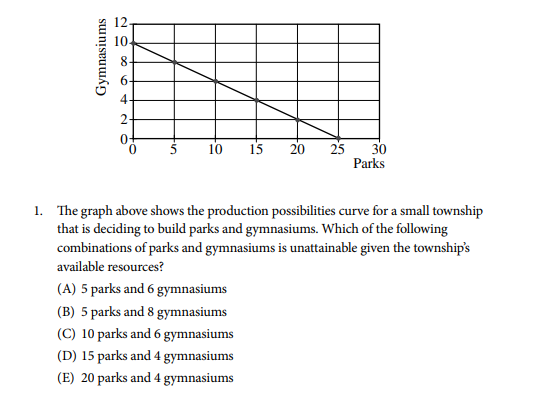

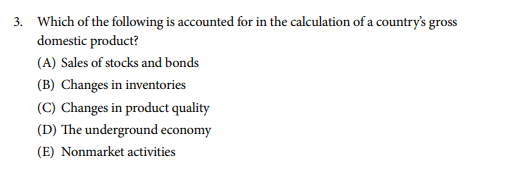
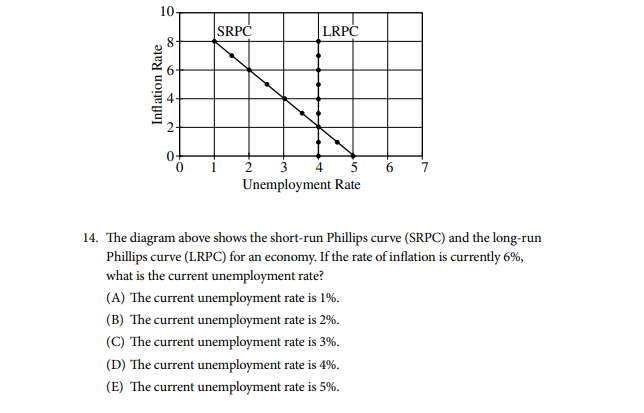
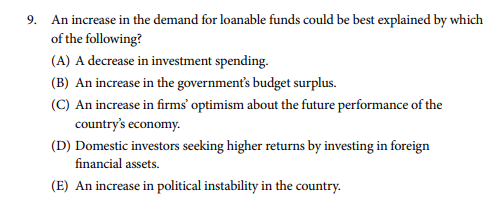
1. E, In order for it to be attainable it has to be located on the productions possibilities curve. The combination of 20 parks and 4 gymnasiums is located outside of the PPC and thus unattainable.
2. B, In both an increase in demand and an increase in supply equilibrium quantity increases, but with an increase in demand equilibrium price increases and with an increase in supply equilibrium price decreases. Since the equilibrium prices go in opposite directions, we say that price is indeterminate.
3. B, inventories is considered part of investment spending within the formula used to calculate GDP which is C + I + G + Xn.
14. B, you would simply find where 6% inflation is on the graph and where it connects with the SRPC curve in the x-axis.
9. C, The loanable funds market remember brings together borrowers and lenders. If there is optimism about the future economy than borrowers are going to be more willing to take loans to invest in their businesses or buy personal items which would lead to an increase in the demand for loanable funds.
Section 2: Free-Response Questions
This section of the exam includes three questions, one that is rather long in length and two that are short. You want to spend at least half the time on the long FRQ. The long FRQ is usually a mix of a variety of different concepts.
Strategies for Free Response Questions
- Maximize the 10-minute organization period, but remember that anything written in and around the question will not be graded. So make sure you transfer anything you want to be graded to the lined pages.
- Don't repeat the question or include "fluff." As an AP exam reader, we want to see responses short and to the point.
- Easy to read means easy to grade: make sure that your writing is clear and that your graphs are large enough to see all the details.
- Make clear connections when asked to explain:
- Label Correctly:
- Using a graph even if they don't ask can be beneficial in earning points.
Sample Free Response Question
Long Question:

Answer
It is important in the FRQ section, to label with the labels that they give you. Please do not use your own labeling. If they specifically ask in the question to use a particular label then it will be written into the rubric and credit cannot be given if you use different labels.
The more detail you can provide on your graphs the better off you will be towards earning points.
Make sure your graphs are legible, hard to read graphs will not be scored.
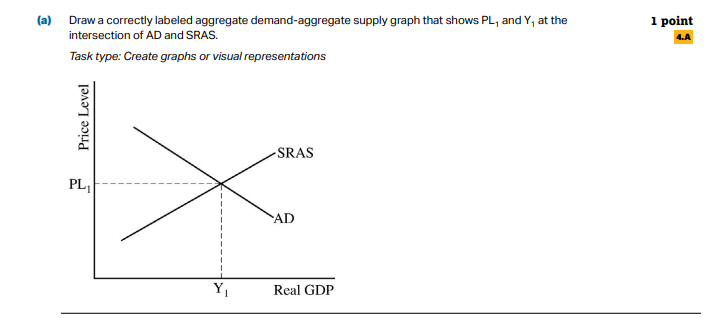
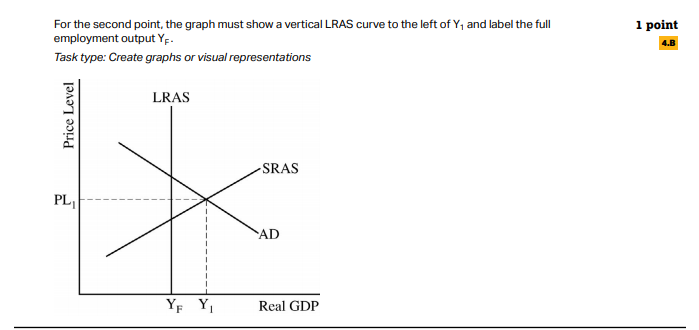
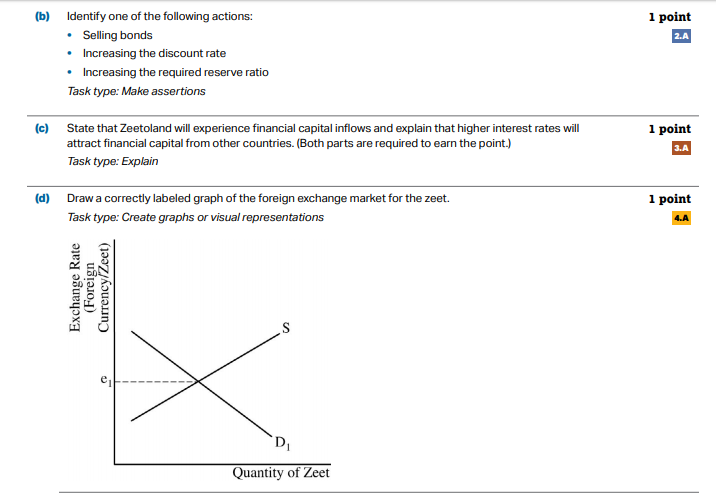
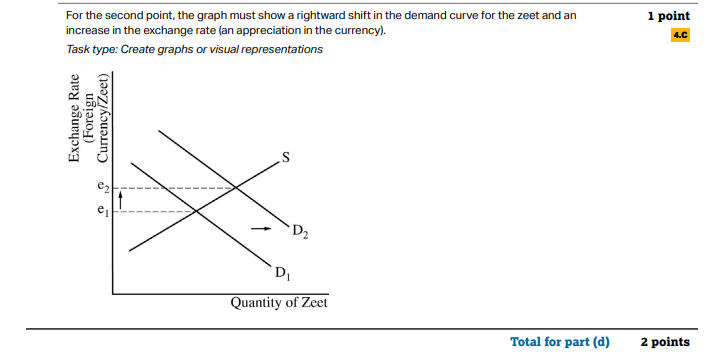
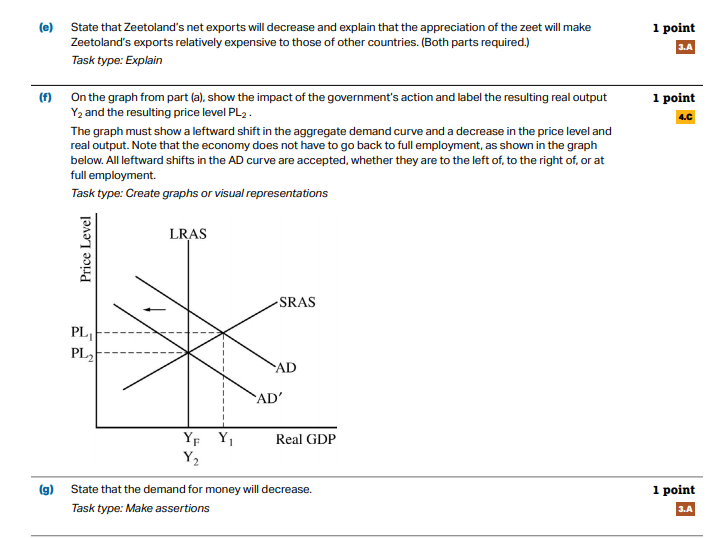

Short Question:
Some tips for this type of question and similar ones:
- If it specifically asks you to show your work then it will be written into the rubric that you cannot receive credit if you do not show your work.
- Again, make sure your graphs are legible and easy to read. Also, make sure labels are correct and show a change if that is what you are being asked to show. (Ex: D to D1)
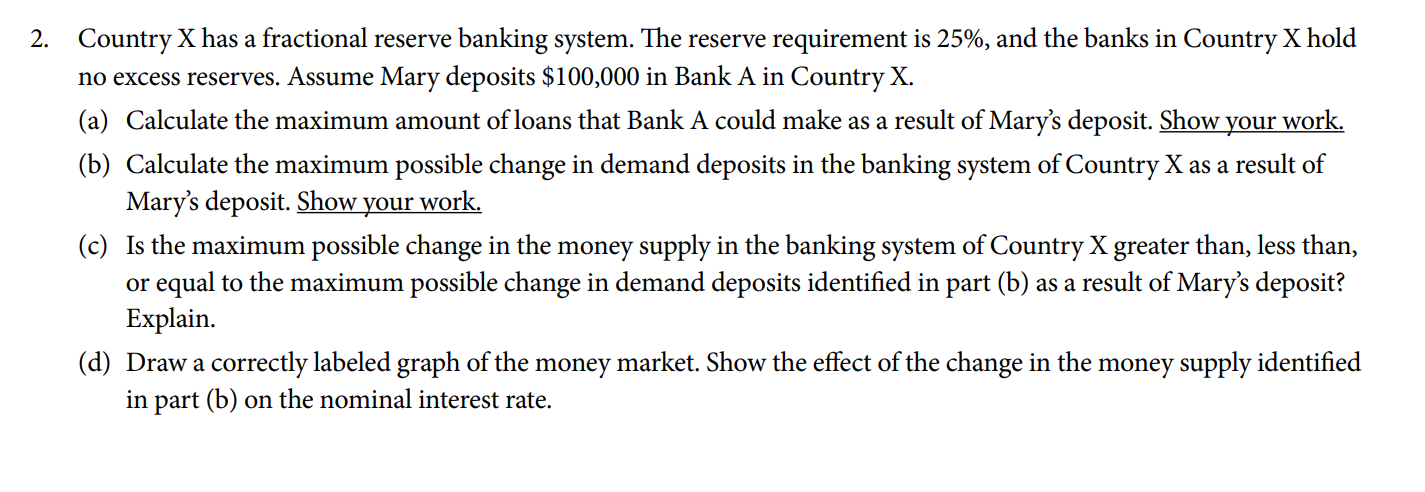
Answer
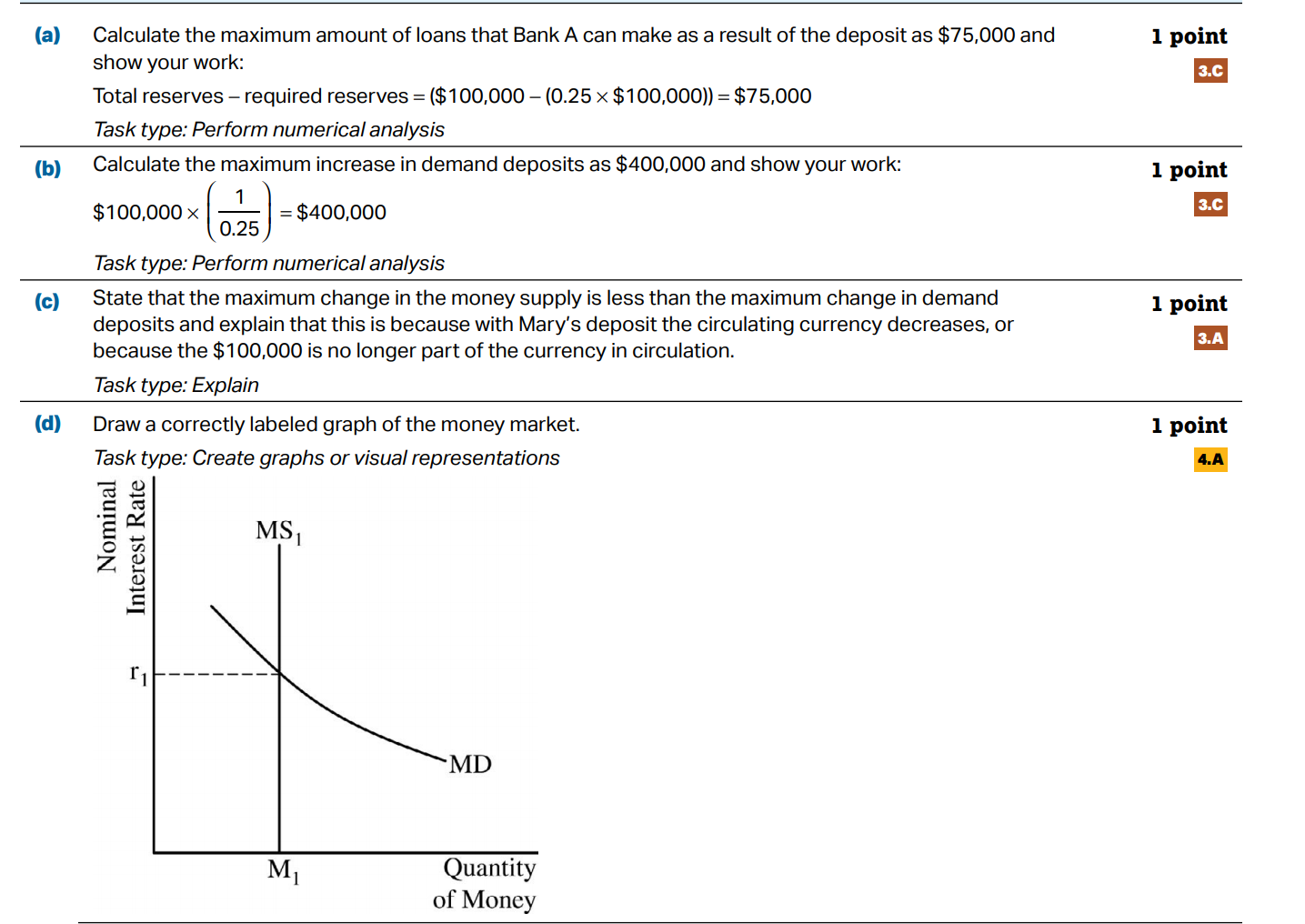
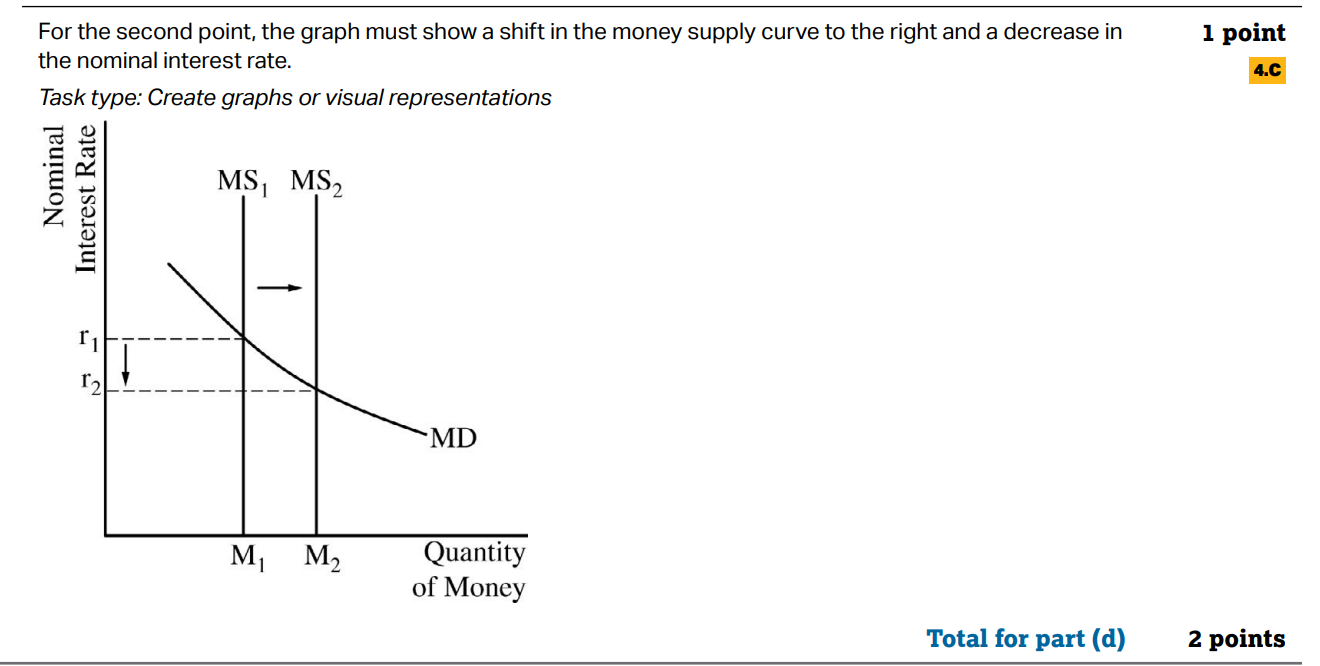

Browse Study Guides By Unit
💸Unit 1 – Basic Economic Concepts
📈Unit 2 – Economic Indicators & the Business Cycle
💲Unit 3 – National Income & Price Determination
💰Unit 4 – Financial Sector
⚖️Unit 5 – Long-Run Consequences of Stabilization Policies
🏗Unit 6 – Open Economy - International Trade & Finance
📝Exam Skills: MCQ/FRQ

Fiveable
Resources
© 2023 Fiveable Inc. All rights reserved.